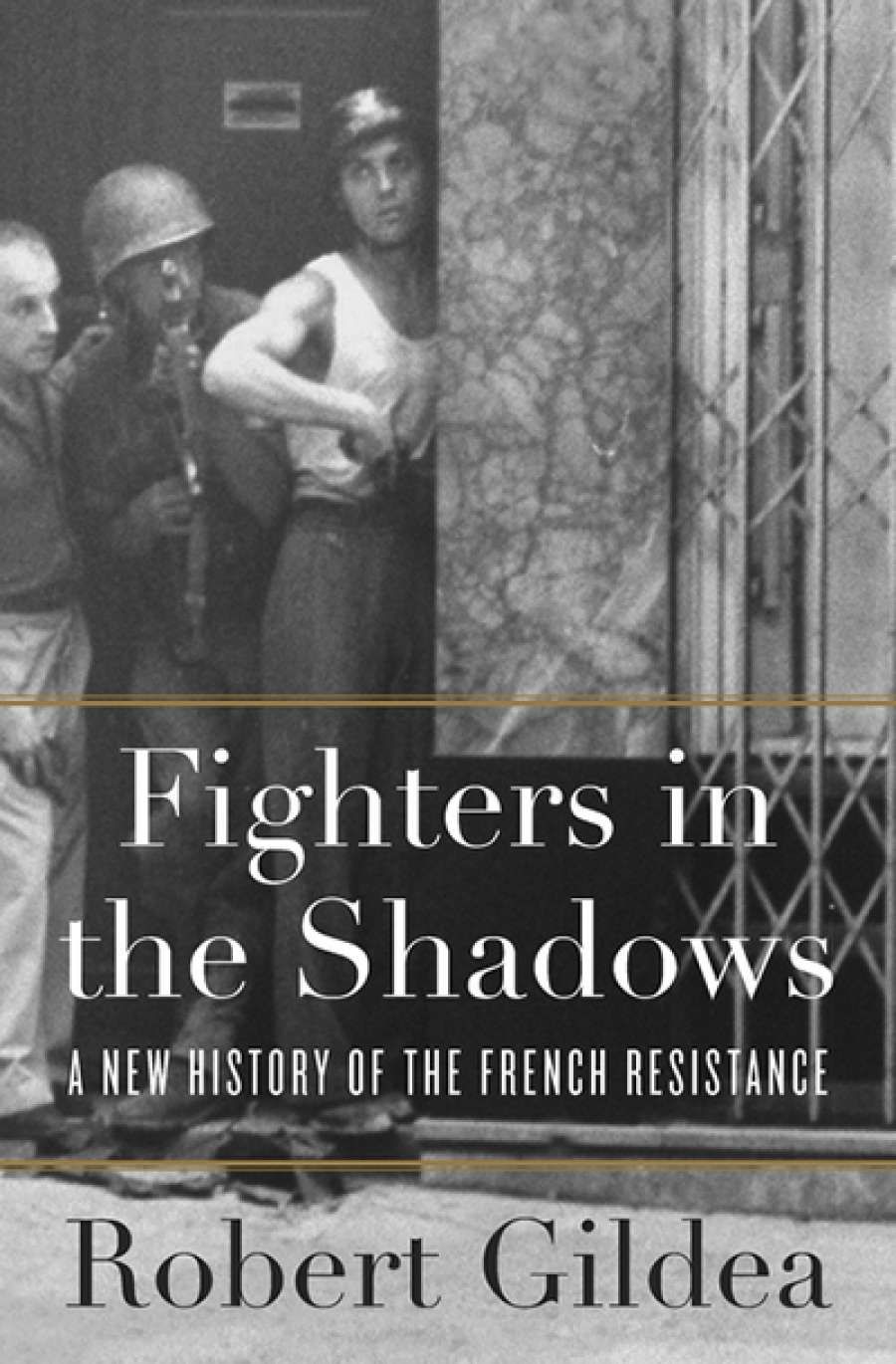
- Free Article: No
- Contents Category: French Studies
- Custom Article Title: Peter Monteath reviews 'Fighters in the Shadows: A new history of the French Resistance' by Robert Gildea
- Custom Highlight Text:
Charles de Gaulle remains, for many, the quintessence of Gallic defiance through the dark years of World War II. Not only did he symbolise the famed resistance, he ...
- Book 1 Title: Fighters in the Shadows
- Book 1 Subtitle: A new history of the French Resistance
- Book 1 Biblio: Harvard University Press (Footprint) $35 hb, 593 pp, 9780674286108
Not that the Gaullists were the only myth-makers in matters of the French Resistance. Next to the myth of national, patriotic liberation was the communist one of popular insurrection. In more recent times, as a superb final chapter explains, those earlier myths have been supplanted by a 'humanitarian narrative of resistance as rescue'. Here, Gildea shows that myth-making has its own history, that France's engagement with its wartime past has always comprised a strategic combination of remembering and forgetting, of foregrounding the heroic, and marginalising the unsavoury, if not the downright embarrassing. Gildea's own project then, is to peer into the shadows behind the myths, to restore nuance and complexity to the reality of the resistance experience, to show that resistance was a far broader church than any of the myth-makers would have us believe.
Not all those on whom he shines a light are obscure. Australians will be aware of the achievements of Nancy Wake, but Gildea's broader point is that women's participation in the Resistance signals a turning point in French social history. The weight of tradition – French women were without the vote at the outbreak of war – spoke against a ready transition of women into resistance activity, since most resistance groups were given to paternalism, and favouring the exploits of alpha males. However, the extraordinary demands of extraordinary times brought a tectonic shift, as countless women stepped into roles hitherto regarded as the preserve of men. One of those women, Marguerite Gonnet, when questioned by a German military court in Lyon as to why she had taken up arms, replied pithily, 'Quite simply colonel, because the men had dropped them.'
 French Resistance Group Poster Posted in Paris During the Liberation of the City, 1945 (via Wikimedia Commons)Others, too, are allowed to step from the shadows. There were variations in the resistance along the lines of region and religion. Lyon might well have been a stronghold, but significant movements emerged in other areas, such as the coal-belt in the north; Catholics committed daring acts of defiance, but so too did Protestants and Jews. The last were a particularly noteworthy case, as in Gildea's rendering of their history, Jews are not merely the passive beneficiaries of the heroics of others, but agents of their own destiny.
French Resistance Group Poster Posted in Paris During the Liberation of the City, 1945 (via Wikimedia Commons)Others, too, are allowed to step from the shadows. There were variations in the resistance along the lines of region and religion. Lyon might well have been a stronghold, but significant movements emerged in other areas, such as the coal-belt in the north; Catholics committed daring acts of defiance, but so too did Protestants and Jews. The last were a particularly noteworthy case, as in Gildea's rendering of their history, Jews are not merely the passive beneficiaries of the heroics of others, but agents of their own destiny.
Communist resistance also fell far short of homogeneity, and Gildea argues for the existence of three main groups. There were the Jewish Bolsheviks, who had come to France from elsewhere. Then there were the free-thinking students who had locked horns with the authorities on the streets of Paris in the 1930s, but out of visceral anti-fascism rather than obedience to the party line. Finally, there were the workers, more inclined to submit to party discipline, even if it stemmed from as far afield as Moscow – though some could never quite swallow the egregious opportunism of the Hitler–Stalin Pact.
Then there were foreigners, readily elided from the sort of myth-making pressed into the service of the nation. Many of them had arrived in interwar France, as what we would today label 'economic refugees'. Yet there were those among them, Germans included, who developed a deep hatred of the occupation which the majority of French citizens – inclined by and large to place their trust in Pétain – could not match.
The members of the resistance, then, hailed from a 'rainbow of different milieux'. That the mythology of the resistance masked more complex realities will surprise few readers. Gildea's main achievement lies not so much in adding substance but detail. As he works his way through a cast of hundreds (an appendix of several pages lists the names of resistance figures of all shades), by creating one roughly sketched vignette after the other the danger – not entirely averted here – is that the bigger picture can slip from view.
As a feat of meticulous historical research. there is much to admire. Gildea has plundered a huge range of sources in great depth. In this regard the book is not, however, without flaw. Nicolas Bodington (not Nicholas Boddington) was not the head of the Special Operations Executive (that was Major General Colin Gubbins), but rather a head of SOE's F Section, and Buchenwald was liberated on 11 April 1945, not eight days later. Nonetheless, in its goal of shining a light in some dark places, in mapping the complex interplay of myth and reality, this book sets a standard few will match.


Comments powered by CComment